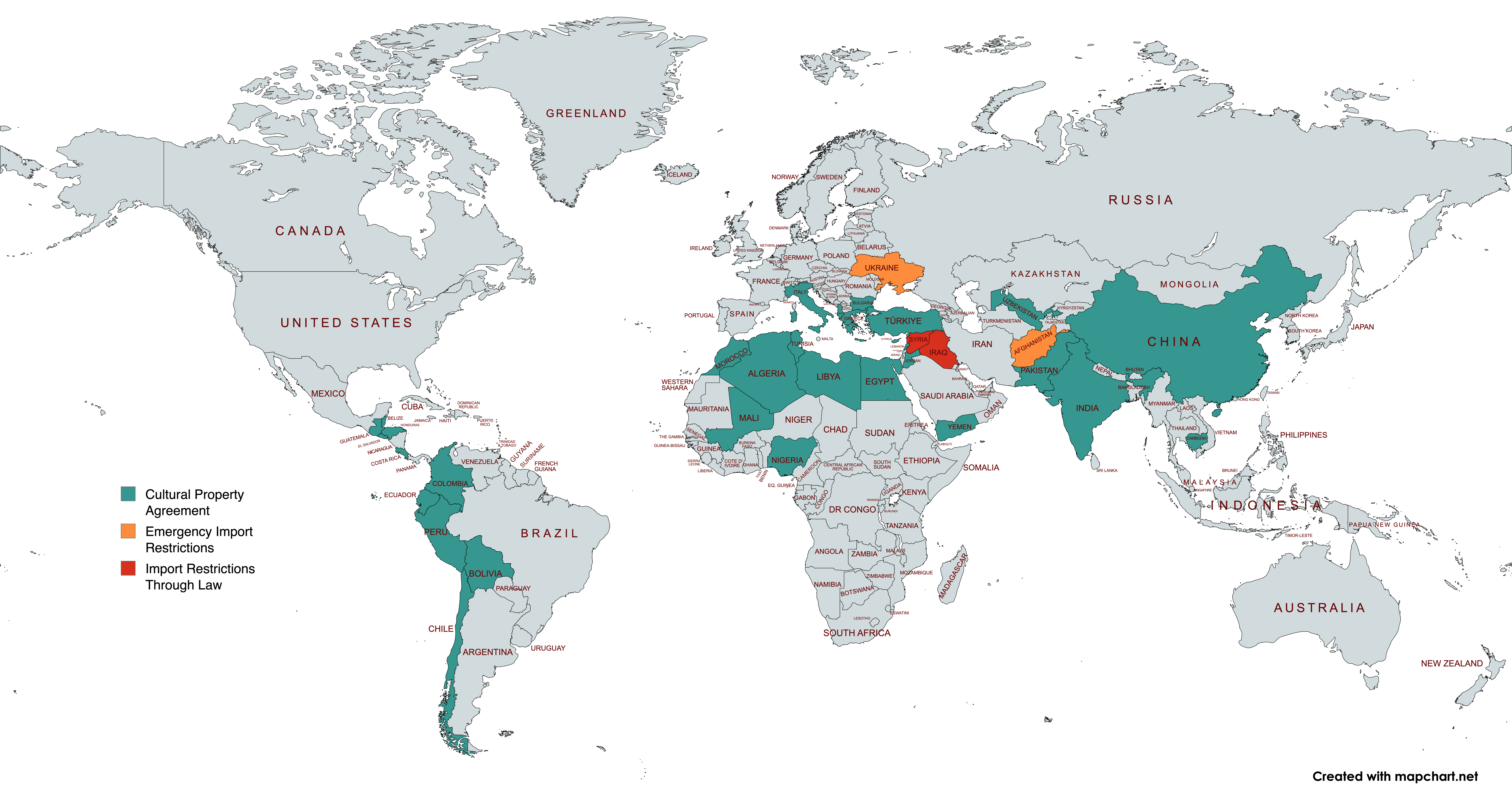International borders are the best defense against any illicit trade, including that in cultural property, a fact well recognized both by law enforcement and leaders in the art world. Restricting the import of undocumented cultural objects—which lack a so-called “provenance,” or paper trail—fights the illicit trade while allowing the legitimate trade to continue and even thrive. Indeed, such restrictions protect good faith purchasers, be they individual collectors, market actors, or museums. As with all global problems, all nations have a role to play. However, since the United States makes up the majority of the international art market, it has a particular opportunity to make a difference. The Antiquities Coalition is proud to work with the U.S. government and international community to keep stolen art and artifacts out of our markets—protecting both American consumers and our world heritage.
We are barring antiquities traffickers from the multi-billion U.S. art market through legislation, international agreements, and executive orders—protecting both American consumers and our world heritage.
We developed these resources to help provide an overview of U.S. import restrictions, track progress, and explain what tools can be used and how to close U.S. markets to illicit antiquities.
This map provides an overview of current U.S. import restrictions. The U.S. has taken great strides to close its borders to art and antiquities from conflict zones or other areas of crisis, protecting the world’s cultural heritage from looting and trafficking—and American consumers from unintentionally buying stolen property.

The U.S. response to the illicit trade has continued to strengthen in recent years and even months, as more evidence has become available on the threat cultural racketeering poses to our national security and economic integrity. This interactive timeline provides a detailed history of U.S. import restrictions, demonstrating how we got to where we are today.
To close U.S. borders to illicit antiquities, we make use of a number of U.S. legal and policy tools.
Cultural Property Agreements (CPAs) between the United States and foreign governments help to stop criminal activity at US borders by keeping looted and stolen art and artifacts out of American markets. Under US and international law, the United States can join CPAs to prevent looted and stolen antiquities and artifacts from entering the American art market, fighting the illicit trade while allowing the legal trade to continue and even thrive.
The US has signed CPAs with a growing number of countries around the world strengthening US leadership and protecting American consumers by keeping our art market free from blood antiquities.
Click on the frequently asked questions below to learn more about these agreements, why they are important, and how they are achieved.